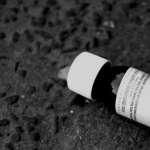What to Know About Methadone Maintenance Treatment
After failing so many times, you may feel like getting clean is impossible. You are losing hope of leading a normal life ever again.
Maybe you just haven’t pursued the right course of treatment.
Even the professionals say that addiction is a treatable disease. Certain treatments have proven better at helping addicts get clean. Programs that have been shown to work with real-life addicts are called evidence-based.
Twelve-step programs, like NA and AA, are evidence-based treatments that have worked for many recovering addicts. Methadone programs are also considered effective. Many addicts have found success with methadone maintenance programs.
For opiate addicts, a methadone clinic can provide immediate relief from withdrawal symptoms. You can also enter into ongoing maintenance so you can get and stay clean.
Read on to find out how methadone maintenance treatment can help you.
What is Methadone Maintenance Treatment?
When you decide to quit opiates, you have several options.
Of course, everyone knows going cold turkey rarely works. If you decide to seek out methadone, you can choose a rapid detox where you stop completely after 21 or 180 days. You can also enter into methadone maintenance treatment which will go on indefinitely.
Up to 80% of opiate addicts who discontinue methadone treatment, end up relapsing, so authorities have become much more willing to allow people to stay on maintenance as long as they:
- Continue to benefit from treatment.
- Wish to remain on maintenance.
- Are at risk of relapsing on opiates.
- Suffer from no significant side effects.
- Stay in treatment as long as a clinician deems it is needed.
By law, methadone can only be distributed through an opioid treatment program, under the supervision of a physician.
Why Methadone?
Methadone is a long-lasting agonist opioid that is prescribed for those who are suffering from addiction to opiates.
Methadone alleviates the symptoms of opioid withdrawal, blocking the pain associated with coming off of other opiates. It does not have a rapid onset like other opioids, and is longer-acting, lasting 24-36 hours.
Heroin only lasts 3-6 hours and must be taken several times and day. Methadone is only needed once. What this means is that rather than having to constantly chase a high, you take a single dose of methadone and enjoy a pretty steady mood all day long. This way you avoid the ups and downs associated with the active use of drugs.
The longer you take methadone, the less likely you are to relapse. Those who take it develop a tolerance that can block the effect of other Opioids.
For example, if you have been taking methadone for a while, you are building a tolerance. This extends to other opioids as well, so you will not get as intense an effect from your usual heroin dose because of the tolerance you have to methadone. This is called “class-tolerance.”
Methadone is a treatment, not a cure, which is why maintenance treatment may be a better choice than detox for many. If you are planning a rapid detox using methadone, consider inpatient treatment so you can get the proper support you need anytime.
How Does Methadone Maintenance Treatment Work?
Methadone maintenance treatment involves the long-term prescription of methadone as an alternative to the opioid which the person was dependant.
It has been used since the 1950s to ease withdrawal symptoms and help people recover from addiction to heroin, prescription pills, and other opiates. It has been proven to be an effective way to recover from Opioid addiction.
Methadone comes in liquid, pill or wafer form and must be administered under the supervision of a medical doctor. The patient can choose between a short-term detox with methadone or go for a longer withdrawal.
Evidence-based practice shows that methadone treatment can and has worked for many addicts. The longer a client gets methadone, the less likely they are to relapse on heroin or other opiates.
Methadone Maintenance therapy is not enough on its own, however, behavioral therapy and counseling are also absolutely necessary if you expect to get well.
When you enter into a methadone maintenance program, it is best to commit for at least a year. You want to give yourself the best possible chance of long-term recovery.
Benefits of Methadone Maintenance Treatment
- Doesn’t get you high.
- Reduces the euphoric effect of other opiates, like heroin and morphine.
- Reduces the number of suicides and overdoses.
- Lessens criminal activity, including work in the sex trade.
- Reduces HIV rates.
- Reduces needle sharing.
- Improves social relationships and productivity.
Drug Addiction and Mental Illness
It is important to keep in mind that drug and alcohol abuse are considered mental illnesses unto themselves. They also occur many times simultaneously with another mental illness.
Substance use changes your desires. It also motivates you to do things you normally wouldn’t, like share needles and engage in unhealthy sexual or criminal acts. It interferes with your ability to do normal activities, like attend school or work or enjoy healthy relationships.
In 2014, 20.2 million adults in the United States had Substance Use Disorder (SUD). 7.9 million of those had both SUD and another mental illness, such as depression, panic attacks, general anxiety disorders, bipolar disorder, schizophrenia, or PTSD.
The medical profession calls this phenomenon “Co-morbidity.” Co-morbidity makes treatment of addiction more difficult because doctors are dealing with symptoms of more than one illness.
When you are recovering from drug or alcohol addiction, you are working with a brain that has been physically altered. It takes a long time for things to go back to normal.
In the meantime, it is very likely that you will suffer from lack of impulse control, anxiety or depression. You will find it much easier to succeed at beating your drug addiction when you get treatment for any other mental illness you may be suffering from.
All Things Considered
Methadone maintenance treatment is an effective way to treat opioid dependence. Using it, many addicts are able to finally get and stay better.
The only way to change and undo addictive behaviors is to explore them and process the emotions around them. Behavioral therapy is an important component in treating opioid addiction. A trained counselor can help you identify triggers, unpack unhealthy thinking, and gain control of your life again.
Visit us for more resources to help you with your recovery.
Sources
[1] National Institute on Drug Abuse. (2019). Treatment and Recovery. Retrieved from https://www.drugabuse.gov/publications/drugs-brains-behavior-science-addiction/treatment-recovery [2] NIMH » Substance Use and Mental Health. (2019). Retrieved from https://www.nimh.nih.gov/health/topics/substance-use-and-mental-health/index.shtml [3] National Institute on Drug Abuse. (2019). National Institute on Drug Abuse (NIDA). Retrieved from https://www.drugabuse.gov/publications/research-reports/common-physical-mental-health-comorbidities-substance-use-disorders/part-1-connection-between-substance-use-disorders-mental-illness




Leave a Reply
Want to join the discussion?Feel free to contribute!